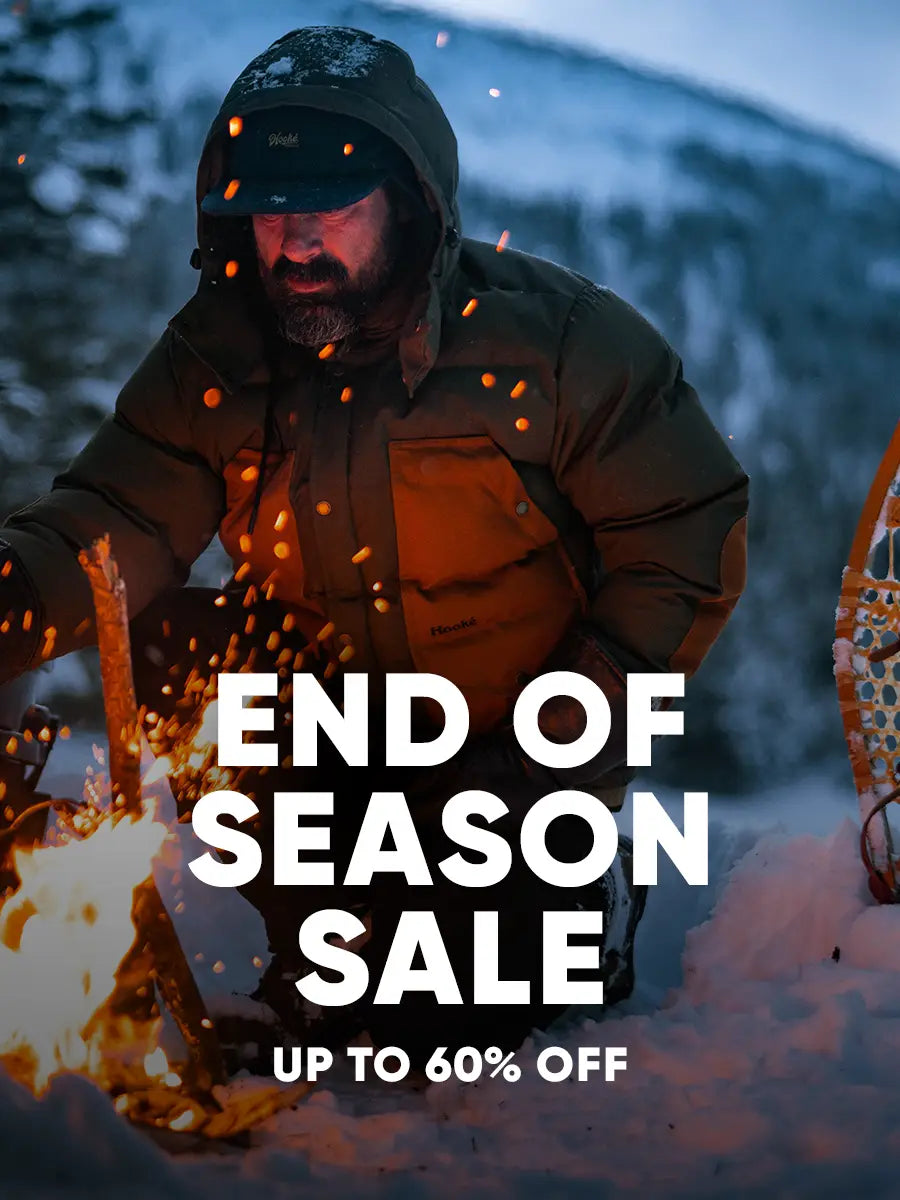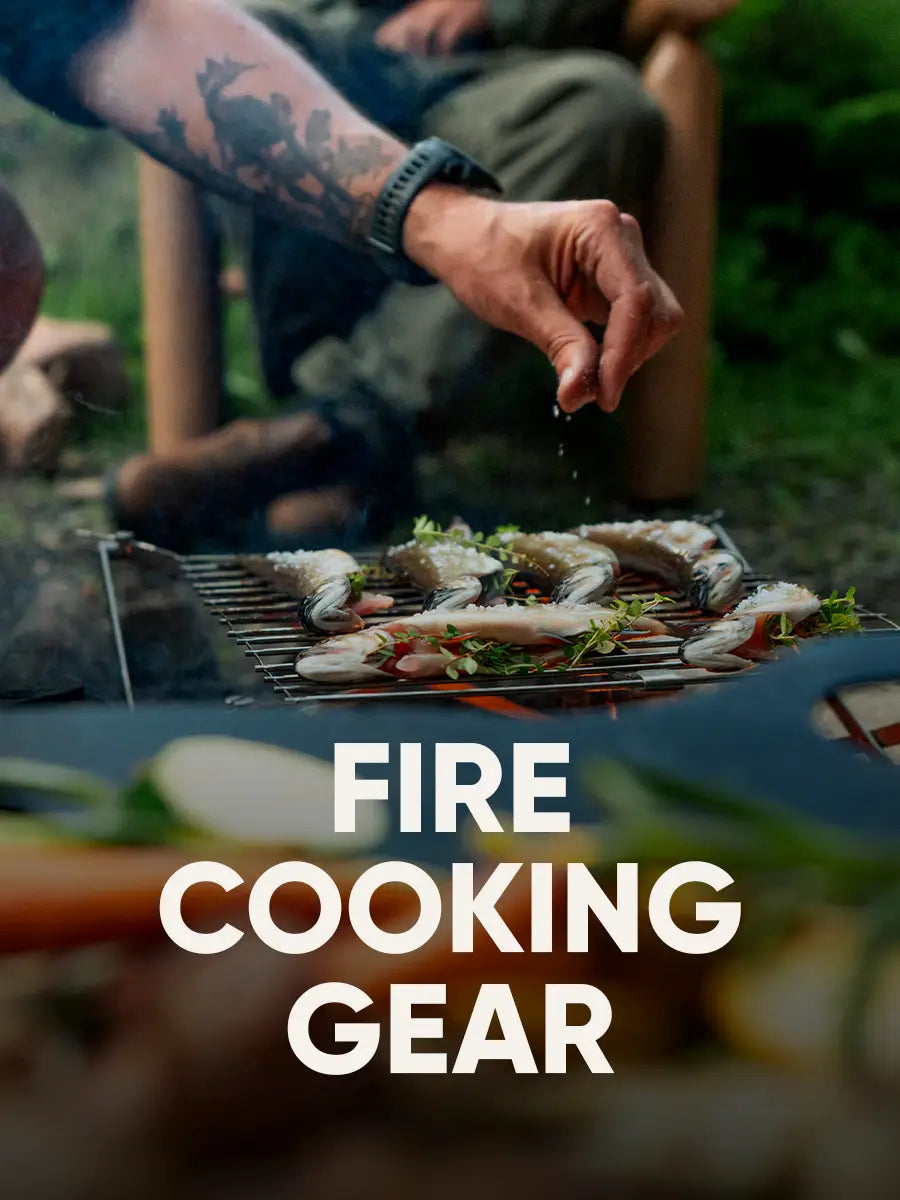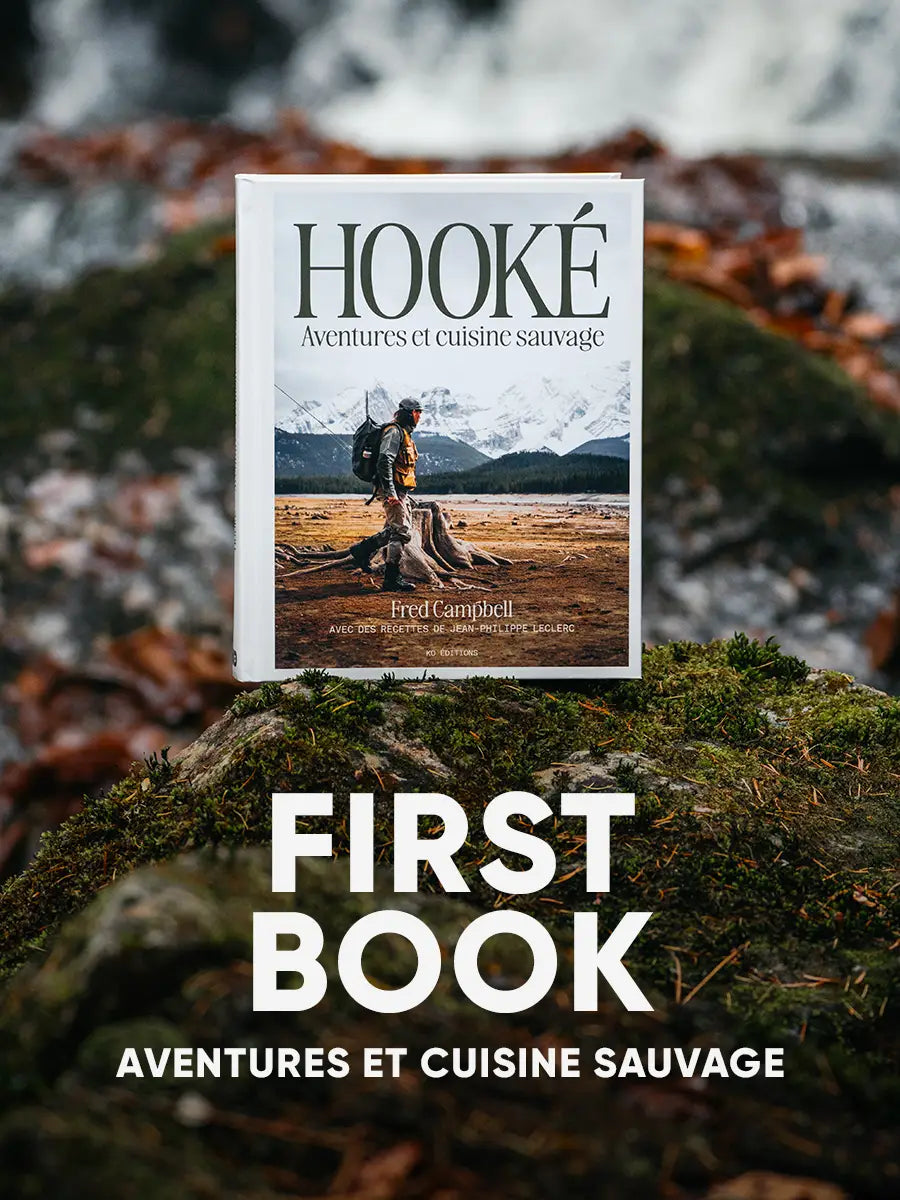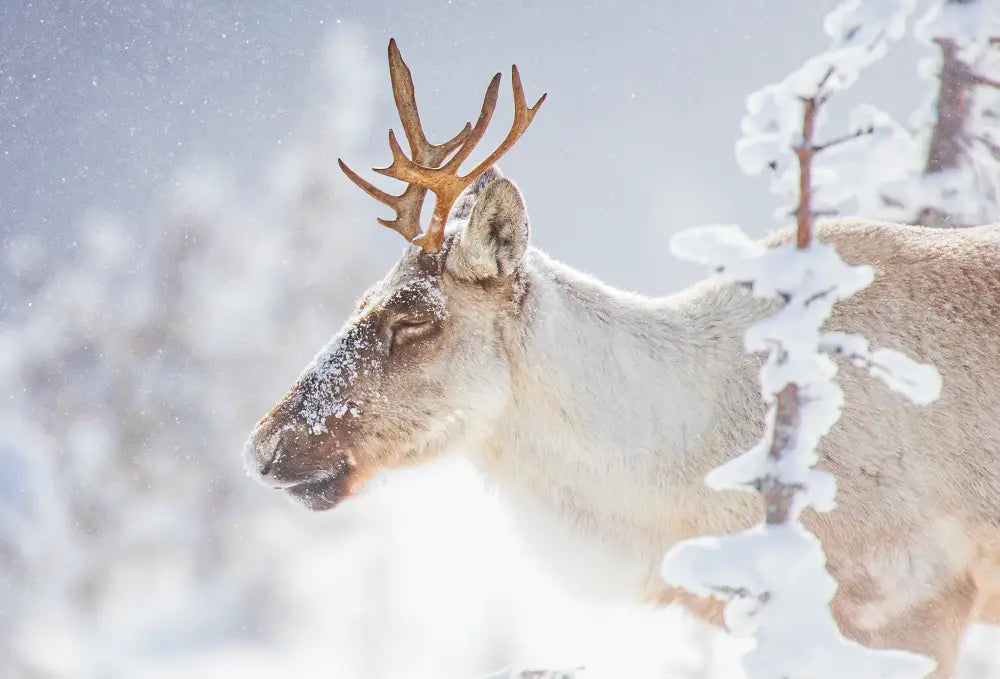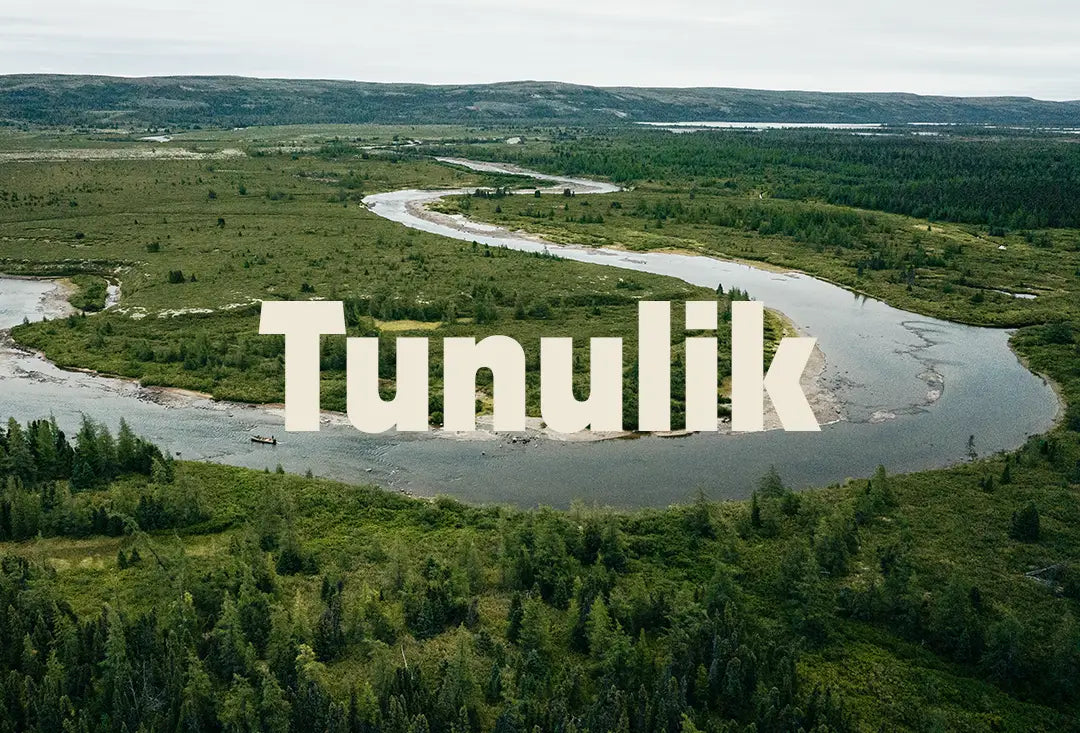
One of Hooké's core values is to promote nature and wildlife conservation. With this in mind, we have chosen to partner with Nature Québec, a non-profit organization, to highlight a current concern: the protection of caribou. A mystery persists not only among the general population, but also among nature and outdoor enthusiasts: what is a caribou? Many people still confuse caribou with moose and white-tailed deer. Unfortunately, few people are aware that the caribou is an endangered species.
To raise awareness, we sought the expertise of the Nature Québec team to answer our questions and deepen our knowledge of this animal, as well as the conservation challenges it faces.

1- What's the difference between caribou, deer and moose?
All are cervids, but there are some features that distinguish them quite clearly: their size, the shape of their antlers and their habitat. The moose is the largest and fattest cervid in Quebec, measuring up to 1.92 m at the shoulder and weighing up to 600 kg. They are found in great numbers in Quebec's woodlands and boreal forests, making them a popular choice for hunting.

In contrast, the white-tailed deer is the smallest, measuring around 1 m at the shoulder and weighing 170 kg. Its antlers form thin, pointed lines. It is the most common deer in North America, and is even overpopulated in some areas due to habitat fragmentation that has led to the disappearance of its predators.
A cross between a moose and a white-tailed deer, the caribou is about 1.40 m tall at the shoulder and weighs 200 kg. The caribou is the only cervid species whose antlers are worn by both males and females. They can be recognized by their strong upward bend.

Comparing cervids with humans
2- What types of caribou are found in Quebec?
There is only one species of caribou in Quebec: the woodland caribou (Rangifer tarandus). However, woodland caribou populations have distinct characteristics inherited from their adaptation to their environment (known as ecotypes). There are three ecotypes in Quebec: woodland caribou, mountain caribou (as in the Gaspé population) and migratory caribou (also known as barren-ground caribou).
3- Where do caribou live and how many are left?
The three caribou ecotypes are found in several populations across the region. Unfortunately, several of these are in serious decline.
Woodland caribou live mainly in the boreal forest, between the 49th and 55th parallels. It is found mainly in the Saguenay-Lac-Saint-Jean region and on the Côte-Nord. Two populations are found further south (Charlevoix and Val-d'Or). The number of woodland caribou is estimated at between 5,000 and 10,000 over the period from 2005 to 20161. That being said, some populations are close to extinction (Val-d'Or ~ 7 individuals; Charlevoix ~ 16 individuals; Pipmuacan ~ 180 individuals).
Mainly found at high altitudes, mountain caribou can be observed in Gaspésie, on the high plateaus of the Chic-Chocs and McGerrigle mountains, and to the north, on the Labrador border (Torngat Mountains). While the Torngat population is difficult to estimate due to its isolation (around 1,000 individuals in 2014, in sharp decline since the 1980s2), the situation in Gaspésie3 is catastrophic. In fact, only around thirty mountain caribou remain on the Gaspé Peninsula, a decline of almost 80% in 15 years!
Finally, the migratory caribou frequents the Arctic tundra, subarctic taiga and boreal forest. Because of their movements, their range is quite vast. In Quebec, there are two major populations: the George River herd and the Leaf River. In the last years, these two herds have shown very alarming declines (-99% for the George River herd between 1993 and 20224, -70% for the Leaf River herd between 2001 and 20225).

@Credits go to Nature Québec
Ranges of caribou populations in Quebec
4- Are caribou species protected?
Partially and to varying degrees. The woodland caribou is protected as a threatened species in Canada under the Species at Risk Act (SARA). In Quebec, it is protected as a vulnerable species under the Loi sur les espèces menacées ou vulnérables (LEMV).
The mountain caribou of the Gaspé Peninsula also benefits from dual protection under Canadian and Quebec law, and its designation there is even more precarious: "threatened species" in Quebec under the LEMV and "endangered" in Canada under the SARA.
Unfortunately for the migratory caribou, it still remains without legal protection, despite declining populations. However, since 2017, the Committee on the Status of Endangered Wildlife in Canada (COSEWIC) has been recommending to the Canadian government that it be classified as "endangered" 6. To be continued!
5) Is hunting responsible for the caribou's decline?
Recent deer poaching incidents (including one involving the very small caribou population in the Gaspé Peninsula) may lead us to believe that hunting is the main cause of the species' disappearance. But this is simply not the case.
It should be noted that the hunting of Gaspé mountain caribou and woodland caribou is strictly forbidden in Quebec, and is punishable by heavy fines. The same rule applies to migratory caribou hunting7.
In addition, certain types of traditional hunting are permitted for First Nations communities, in respect of their ancestral rights, but many of these communities have stopped harvesting caribou for food, ritual or social purposes due to the decline in the herd.
Hunting is not responsible for the caribou's decline. However, occasional poaching does occur, further weakening populations on the verge of extinction.
6) So why are caribou in decline?
Several historical factors explain the decline of caribou populations in Quebec, but the majority are linked to the disturbance of their habitat by human activities.
For example, intensive forestry activities deprive woodland and mountain caribou of the mature forests on which they depend, particularly for arboreal lichen. Also, forestry and mining activities modify habitat and create logging roads that favor caribou predators such as wolves, coyotes and bears8.Finally, caribou are fearful: they don't appreciate the disturbance caused by industrial activities and recreational tourism, which will drive them to move and make them more vulnerable to predation.

Evolution of logging around Parc national de la Gaspésie between 1976 and 2018
7) What is the relationship between First Nations communities and caribou?
The caribou's presence on the land goes back thousands of years (several millennia, in fact), as do the First Nations. In fact, the Innu and many other First Nations in Quebec are intimately linked to the species. Atiku, as the Innu call it, is at the heart of their culture. Their ancestors were nomads because they followed the caribou. It was thanks to the caribou that they survived on the land for millennia. Their dependence on the species transcends into their culture, their identity, and their social and spiritual universe. The caribou's decline is causing inestimable cultural losses in terms of their language, knowledge and way of life. This has considerable repercussions on the well-being and vitality of their communities.
Today, First Nations communities are mobilizing to protect the species, just as it has watched over them for millennia.
8) How can I help?
Now that you've got to know it better, would you like to do your bit for caribou in Quebec? The first thing to do individually is to stay away from caribou during your outdoor activities. Yes, it's hard not to succumb to their charm, but remember that caribou are fearful, and getting them to move around makes them more vulnerable to predators.Then you can support an organization like Nature Québec, which is actively campaigning for their protection and recovery. Go here for more information and to find out how you can take action for the caribou. Every signature and donation matters.
1 MFFP (2021). « Revue de littérature sur les facteurs impliqués dans le déclin des populations de caribous forestiers au Québec et de caribous montagnards de la Gaspésie », Ministère des Forêts, de la Faune et de Parcs, Québec, novembre 2021, en ligne,
https://consultation.quebec.ca/uploads/decidim/attachment/file/122/RevueLitterature_CaribouVF.pdf
2 COSEPAC (2017). « Caribous : Population des monts Torngats », Gouvernement du Canada, en ligne, 2017, https://publications.gc.ca/collections/collection_2022/eccc/En14-464-2017-fra.pdf
3 MORIN, M., M. BARBÉ, F. LESMERISES et G. CHABOT (2022). « Inventaire aérien de la population de caribous montagnards (Rangifer tarandus caribou) de la Gaspésie à l’automne 2021 », Québec :
ministère de l’Environnement, de la Lutte contre les changements climatiques, de la Faune et des Parcs, Direction de la gestion de la faune de la Gaspésie–Îles-de-la-Madeleine, en ligne,
https://mffp.gouv.qc.ca/wp content/uploads/RA_inventaire_caribou_Gaspesie_aut2021_MELCCFP.pdf
4 BRODEUR, Vincent, John PISAPIO, Sara MCCARTHY, Stéphane RIVARD et Joëlle TAILLON. 2021. « Inventaire aérien du troupeau de caribous migrateurs de la rivière George en juillet 2020 », ministère des Forêts, de la Faune et des Parcs, Québec, et Department of Fisheries, Forestry and Agriculture, Newfoundland and Labrador, en ligne,
https://mffp.gouv.qc.ca/documents/faune/RA_inventaire_TRG_2020_FR.pdf
5 QUÉBEC (2022). « La situation du caribou au Québec », Gouvernement du Québec, en ligne,
https://www.quebec.ca/agriculture-environnement-et-ressources-naturelles
6 GOUVERNEMENT DU CANADA (2017). « Caribou (Rangifer tarandus) certaines populations : évaluation et rapport de situation du COSEPAC 2017 », Gouvernement du Canada, en ligne, https://www.canada.ca/fr/environnement-changement-climatique/services/registre-public-especes-peril/evaluations-rapports-situations-cosepac/caribou-certaines-populations-2017.html
7 RADIO-CANADA (2016). « Fermeture de la chasse au caribou : la Fédération québécoise des chasseurs et pêcheurs en colère », ICI Abitibi-Témiscamingue, en ligne, https://ici.radio-canada.ca/nouvelle/1007513/fermeture-de-la-chasse-au-caribou-la-federation-quebecoise-des-chasseurs-et-pecheurs-en-colere
8 Équipe de rétablissement du caribou de la Gaspésie. 2018. Plan de rétablissement de la population de caribous (Rangifer tarandus caribou) de la Gaspésie — 2019-2029, produit pour le ministère des Forêts, de la Faune et des Parcs, Direction générale de la gestion de la faune et des habitats, 59 p. https://mffp.gouv.qc.ca/documents/faune/especes/PL_retablissement_caribou_Gaspesie_MFFP.pdf




